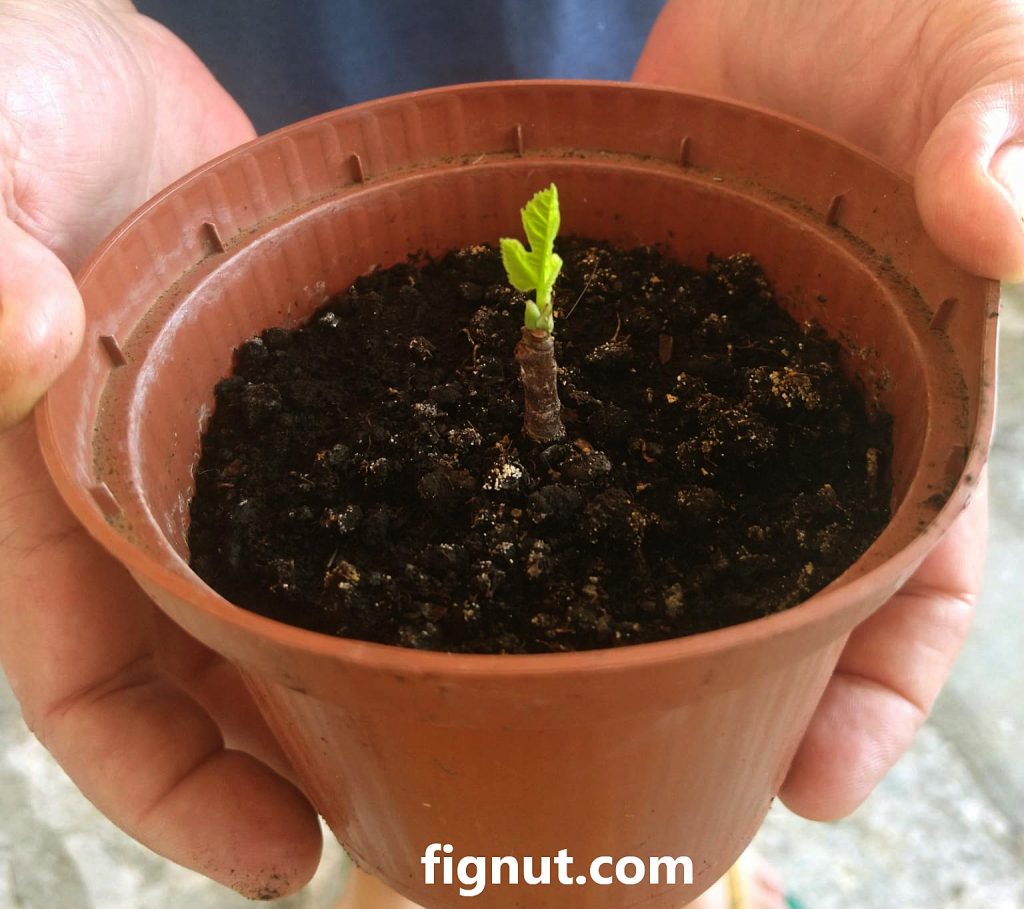Imagine sinking your teeth into the luscious, sugary flesh of a ripe fig, savoring its intense sweetness and juicy pulp. If you dream of growing your own fig trees and harvesting this delectable fruit, starting them from cuttings is an accessible and rewarding endeavor. In this comprehensive guide, we will delve into the art of propagating fig trees, empowering you with the knowledge and techniques to cultivate thriving specimens.

Image: www.youtube.com
Fig trees, known for their graceful foliage and delectable fruit, have a rich history that dates back to ancient civilizations. They are relatively easy to grow from cuttings, making them an ideal option for gardeners of all skill levels. Whether you are a seasoned cultivator or a budding enthusiast, this guide will provide you with the essential steps and expert insights to start your own fig tree journey.
Understanding Fig Tree Propagation from Cuttings
When it comes to propagating fig trees, cuttings offer a reliable and effective method. This technique involves taking a portion of a stem from a mature tree and planting it in a suitable growing medium. Under the right conditions, the cutting will develop roots and eventually grow into a new tree that is genetically identical to the parent plant.
The key to successful fig tree propagation from cuttings lies in selecting the right cuttings and providing them with the necessary environmental conditions. By following the steps outlined in this guide and incorporating the expert advice provided, you can increase your chances of achieving vibrant and fruitful fig trees.
Essential Steps for Starting Fig Trees from Cuttings
1. Selecting the Right Cuttings: The first step is to choose healthy cuttings from a mature fig tree. Look for branches that are at least 12 inches long and have a diameter of approximately 1/4 inch. Ensure that the cuttings are free of pests and diseases.
2. Preparing the Cuttings: Using a sharp knife or pruning shears, make a clean cut at a 45-degree angle approximately 1 inch below a node, which is the point where leaves emerge from the stem. Remove any leaves from the bottom 2 to 3 inches of the cutting.
3. Choosing a Growing Medium: Fig cuttings can be rooted in water or directly in a potting mix. If using water, place the cuttings in a glass or jar filled with clean water, ensuring that the bottom 2 to 3 inches are submerged. If using a potting mix, choose a well-draining mixture that contains perlite or vermiculite.
4. Planting the Cuttings: If planting in water, cover the container with plastic wrap or a lid to create a humid environment. If planting in a potting mix, insert the cuttings approximately 2 inches deep into the soil and firm the soil around the base.
5. Providing the Right Conditions: Place the cuttings in a warm, well-lit area with indirect sunlight. Keep the cuttings moist but avoid overwatering. Misting the leaves can help maintain humidity.
Expert Insights and Actionable Tips
Expert Insight: “When selecting cuttings, choose those from the lower part of the tree as they tend to root more easily,” advises Dr. Maria Smith, a renowned horticulturist. “Additionally, using a rooting hormone can significantly enhance the success rate of your cuttings.”
Actionable Tip: To promote root development, consider applying a rooting hormone to the cut end of the cutting before planting. Follow the instructions on the rooting hormone label carefully.

Image: fignut.com
How To Start Fig Trees From Cuttings
Compelling Conclusion
Starting fig trees from cuttings is a rewarding experience that can bring joy and sweetness to your garden or home. By following the steps outlined in this guide, utilizing the expert insights provided, and embracing the art of patience, you can successfully cultivate your own thriving fig trees. Whether you yearn for the taste of freshly harvested figs or simply seek to add a touch of beauty to your space, this guide empowers you with the knowledge and techniques to embark on this captivating horticultural journey. As the saying goes, “The best time to start a fig tree was years ago. The second-best time is now.” Embrace the joy of fig tree cultivation and reap the rewards of your efforts for seasons to come.